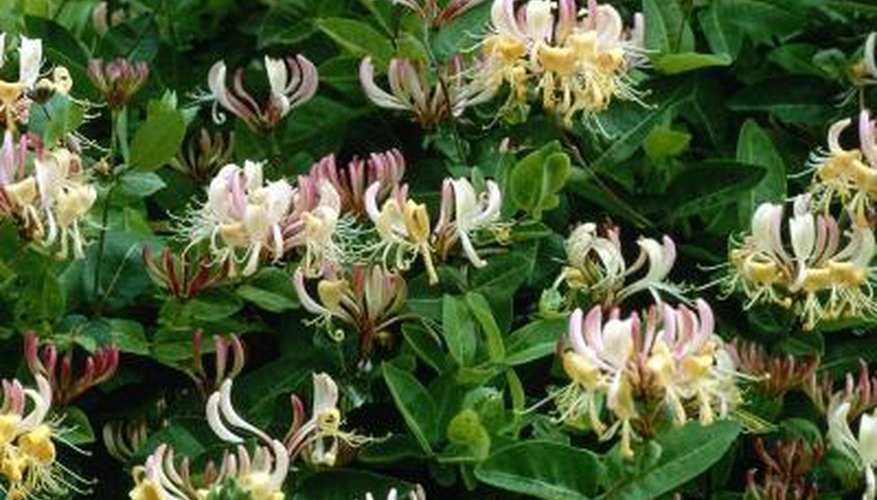Honeysuckle (Lonicera spp.) vines are grown for their fragrant flowers in shades of orange, yellow, pink, purple, red or white. The flowers bloom in pairs or clusters on the evergreen or deciduous plants. Honeysuckle plants also grow as shrubs and are used as hedges. A fungal infection causes honeysuckle vines to die.
Identification
Honeysuckle vines are susceptible to the sudden oak death disease caused by Phytophthora ramorum. The soil-borne fungus commonly affects plants growing under humid and moist conditions. The pathogen infects plants through the roots.
Damage
The disease is characterised by wilting foliage. This is followed by the appearance of bleeding cankers on infected plants accompanied with rapid decline. The brown to black secretion is heavier during dry weather. Infected and damaged trees become sites for frequent pest infestations that contribute to plant death.
- The disease is characterised by wilting foliage.
- This is followed by the appearance of bleeding cankers on infected plants accompanied with rapid decline.
Management
There is no cure for sudden oak death disease. Preventing the spread of the disease is the best management strategy, as cited by the University of California Extension. Obtain plants from reliable sources. Remove sick plants entirely with roots to keep the disease from spreading.
- There is no cure for sudden oak death disease.
- Remove sick plants entirely with roots to keep the disease from spreading.
